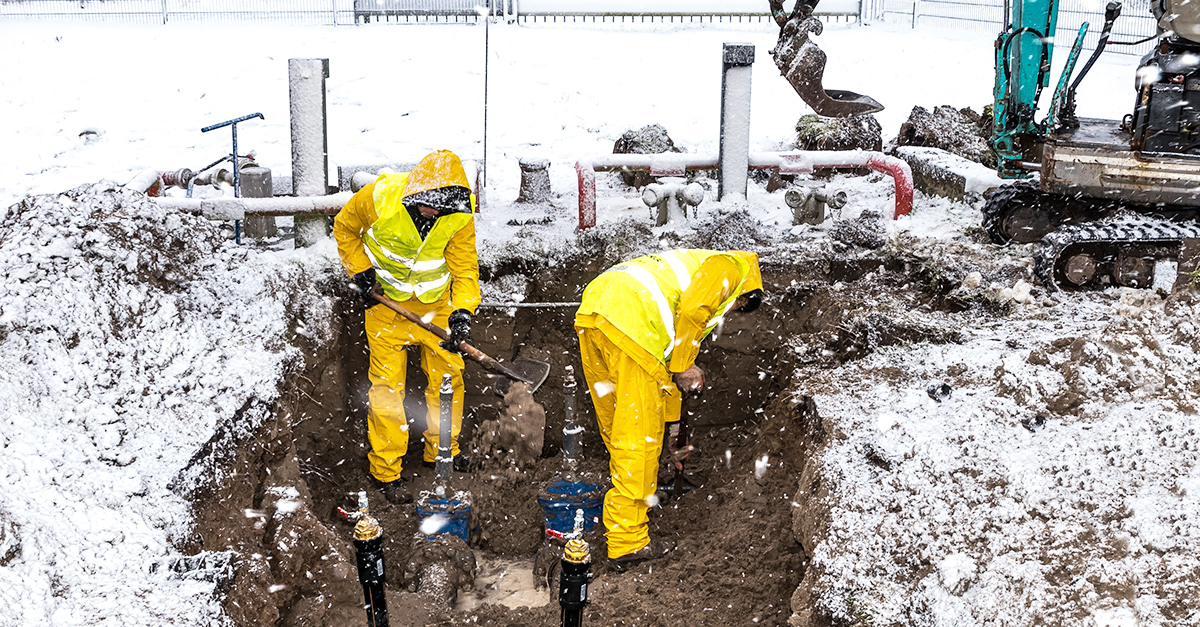Life-Saving Trench Safety Tips for This Winter
 Trenching is an essential part of many construction projects, but it can easily become one of the most dangerous aspects of the job. These risks change and get more dangerous when the temperature starts dropping. Consider these potentially life-saving trench safety tips if trenching is on the schedule for the cold winter months.
Trenching is an essential part of many construction projects, but it can easily become one of the most dangerous aspects of the job. These risks change and get more dangerous when the temperature starts dropping. Consider these potentially life-saving trench safety tips if trenching is on the schedule for the cold winter months.
1. Safety First, Always
There are a thousand and one ways to get hurt on a construction site, and they aren’t always avoidable. Thankfully, there are just as many steps a construction manager can take to reduce the risks and mitigate the potential for injury or incident.
Before the project begins, work to create a culture of safety that includes everyone from the newest hire all the way up the ladder to the CEO or company owner. You’ve probably already got a safety plan in place, but it needs to be integrated into every part of the company.
Creating a safety culture makes safety everyone’s responsibility. As you move into winter, when the risks — especially those associated with trenching — are higher, creating this culture of safety can help prevent incidents.
2. Account for Snow
The soil surrounding a trench is already massively heavy. A single cubic yard of soil can weigh as much as the average car. Once winter arrives, the added weight of the snow creates even more of a hazard. Light and fluffy snow can weigh around 7 pounds per cubic foot. When it starts getting heavy and wet, it can weigh upwards of 20 pounds per cubic foot — and that weight only goes up when the ice starts forming on the surface or freezing into the soil itself.
Accounting for the weight of snow and ice when designing trench supports is essential for wintertime trenching safety.
3. Wear Appropriate Clothing
Working in the cold already creates a number of increased risks, ranging from hypothermia to frostbite and everything in between. Working in trenches adds an additional risk — trench foot. Also known as immersion foot, it is caused by working in low temperatures in wet footwear for long periods.
Immersion foot can occur in temperatures as high as 60°F if the feet are wet — something that can happen frequently as trenches fill up with water. Wearing appropriate clothing, including hydrophobic boots and frequently changing socks as they get wet, can help prevent these problems.
4. Install Protective Systems
Trench support and protective systems are essential for worker safety for any trenches deeper than 4-5 feet. According to OSHA, trenches deeper than 5 feet need protectives put in place, and trenches deeper than 20 feet must have protective systems designed by professional engineers. In the wintertime, these protective systems need to take the weight of wet soil, snow, and ice into account.
5. Assign a Competent Person
While it is important to have competent people in every position on a construction site, when dealing with trenching, it is also important to have a “designated competent person.” OSHA describes these individuals as “a person who has been designated by the employer for the express purpose of designing, inspecting, and supervising the trench.”
A construction site’s designated competent person should be a professional engineer with experience in managing trench safety.
6. Be Mindful of Heavy Equipment
No one digs trenches with shovels anymore. Heavy equipment is an essential part of any construction site, but they bring with them their own type of risks. Skid steer loaders, for example, are valuable for working in confined spaces where backhoes or excavators won’t fit.
Working in these confined spaces increases the risk of a caught-in/caught-between incident — something common enough that it’s included in OSHA’s “Fatal Four” — the four types of workplace accidents that cause the most collective fatalities.
7. Install Safety Signs
Trench collapses aren’t the only safety hazard that has the potential to put workers at risk where trenches are concerned. If the trench isn’t obvious — well marked with signs, lights, and barriers — it’s possible for someone to blunder into them and fall. This can be even more dangerous if the edges of the trench are obscured by snow or ice.
A fall from 5 feet isn’t usually fatal, but if you trip and fall headfirst and don’t have a chance to right yourself before you land, it could easily become so. Take the time to install safety signs and barriers around trenches to prevent this sort of incident.
8. Inspect Trenches Frequently
A trench collapse can happen in seconds. There are multiple video examples on the internet that can showcase just how quickly a trench that is seemingly stable at first glance can fall apart in an instant. While collapses aren’t always avoidable, you can prevent them from becoming dangerous or deadly by inspecting the trenches frequently to look for signs of an impending failure. If discovered, you have the option to evacuate the trench until it can be addressed.
Along the same lines, you should always have an emergency plan in place in case someone is still in a collapsing trench. Keep everyone away from a collapsed trench if they’re not actively involved in search and rescue, and try to reroute traffic and any equipment that might cause vibrations that could make the collapse worse.
9. Consider Alternatives to Trenching
Trenching may be the most traditional way to complete a variety of tasks on a construction site, but it isn’t always the safest or most efficient way to complete the job. Consider alternatives to trenching, such as horizontal directional drilling or auger and slurry boring, to complete the same tasks without digging trenches or potentially putting employees at risk.
These may require some additional preparation — especially if you’re contending with frozen soil during the cold winter months — but can be a safer alternative than digging a trench and putting a person in it.
Stay Safe This Winter
Winter might not be the best season for working on construction projects, but that doesn’t mean work needs to grind to a halt. Keep these tips in mind to keep your team safe during the cold winter months, especially while they’re working in trenches.
To understand how Fieldwire can help you and your team manage people and projects more efficiently, please register for a live demo of our platform below.
Rose Morrison is the managing editor of Renovated, where she covers contracting and residential construction topics. Check out her Twitter to see more of her work.

 Rose Morrison •
Rose Morrison • 
















